Various RAID levels and configurations, such as RAID 0, 1, 5, 6, 10, etc. are used to cater to the diverse data usage patterns and storage requirements. Among these, RAID 5 is the most popular level, widely used by individuals and enterprises.
A RAID 5 server is nothing but a RAID 5 array that employs block-level data striping with a single parity distributed among the drives. It has a fault tolerance of 1 drive, i.e., if one drive fails, the array will survive, and you can retrieve the data without any loss. However, if two or more disks fail, it will result in a complete RAID 5 server failure, causing permanent data loss.
Fault tolerance aside, there are several reasons behind RAID 5 failure and subsequent data loss. These are –
• Human errors
• Drive failure
• Software failure
• Controller failure
• Mechanical errors
• Power outage
• DDoS attack
• Malware attack
In some cases, a broken or corrupt RAID 5 array might not show the data present on it or even become inaccessible.
There are two major cases of data loss in RAID 5. These are –
• Single disk failure
• Multiple disk failure
In case of single disk failure, there is a chance of RAID 5 data recovery. This is because RAID 5 has a fault tolerance of 1 disk failure. However, in case of multiple disk failure in a RAID 5 array, data is lost permanently.
Learn how a powerful RAID 5 recovery software can simplify the RAID 5 file recovery process.
Recover RAID 5 Data Using Advanced RAID RecoverySoftware
In this section, we will learn how to recover data from a failed RAID 5 server with a single disk failure. If you are in a similar situation and want to skip the hassle of the manual process of performing RAID recovery by hot-swapping the disks, use a specialized RAID data recovery software. Such software works for both degraded drives and logically failed RAID arrays.
A RAID recovery software is an advanced data recovery solution that helps recover data and files from failed or crashed RAID 5 arrays. It recovers files from a failed RAID 5 array by virtually rebuilding it using various parameters fed by the user.
In cases with unknown parameters, the software automatically detects the missing parameters to rebuild a virtual RAID 5 array.This is done by using patterns from the connected drives. Once the RAID 5 array is rebuilt, the software scans it for recoverable data. It uses parity and the healthy drive to rebuild the missing data by applying XOR operation.
Here are the detailed steps for using this software –
• Purchase and install Stellar Data Recovery Technician.
• Launch it.
• On the first screen, select the type of data you want to recover. By default ‘All Data’ is selected. Click Next.
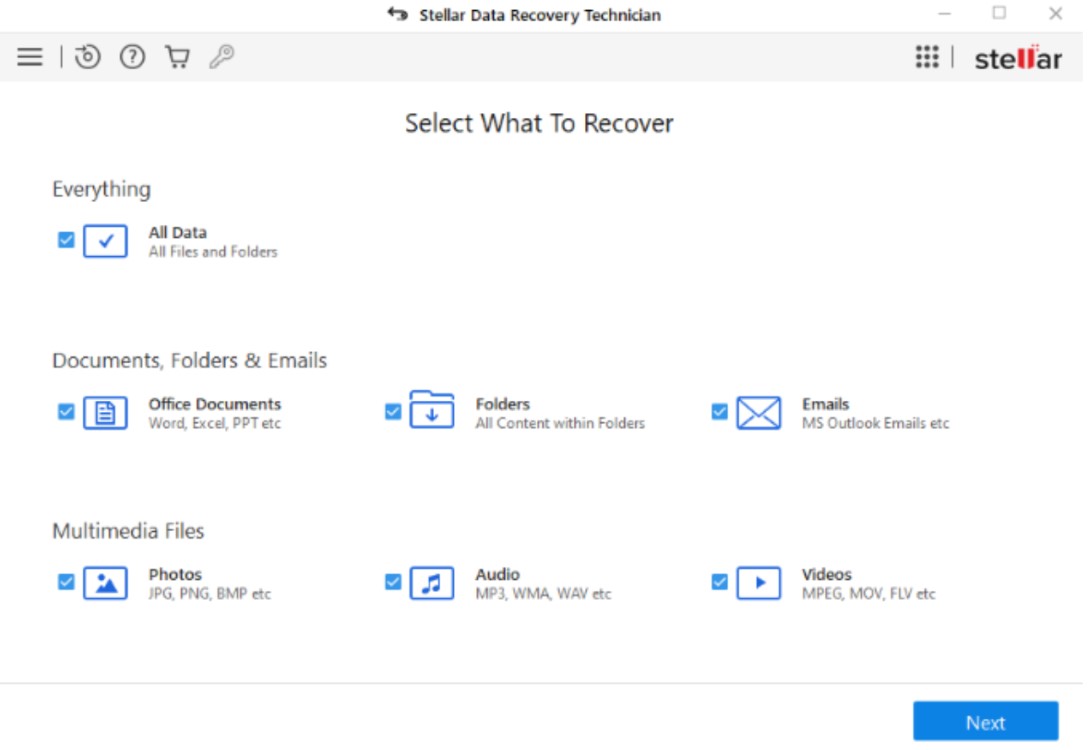
• On the next screen, select RAID Recovery and click Scan.
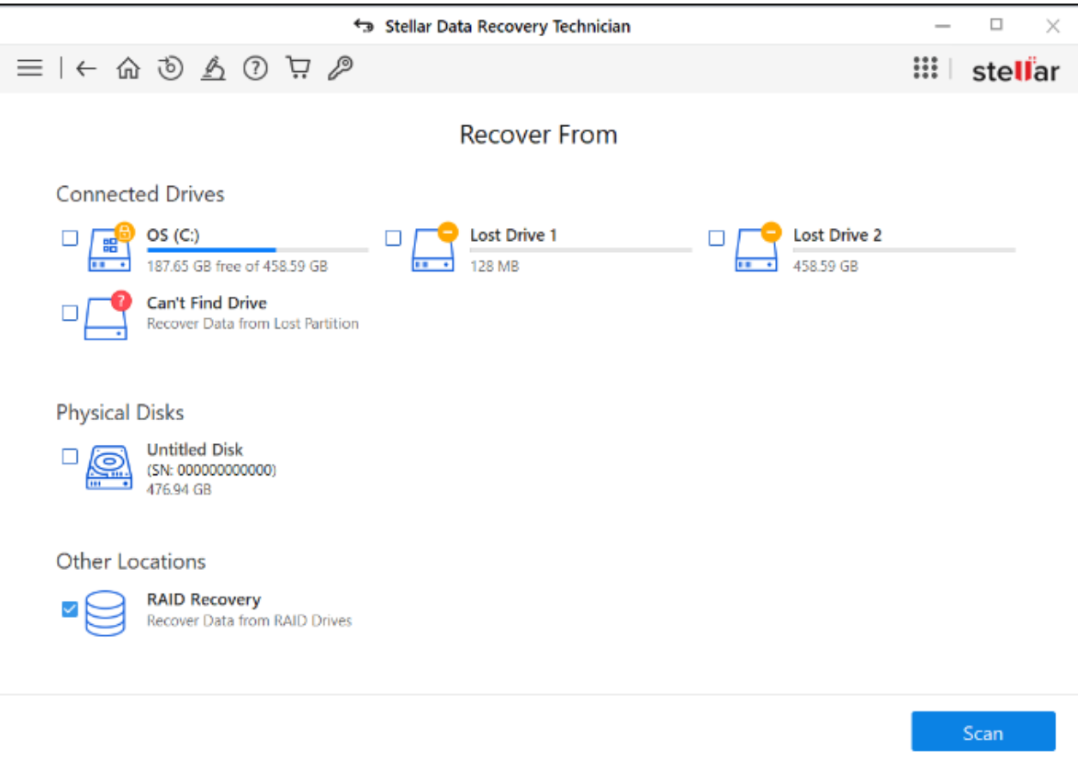
• It will open the RAID Reconstruction window.
• Select RAID type and other details like Parity Order, Block Size, etc. After adding all the details, click on Build RAID.
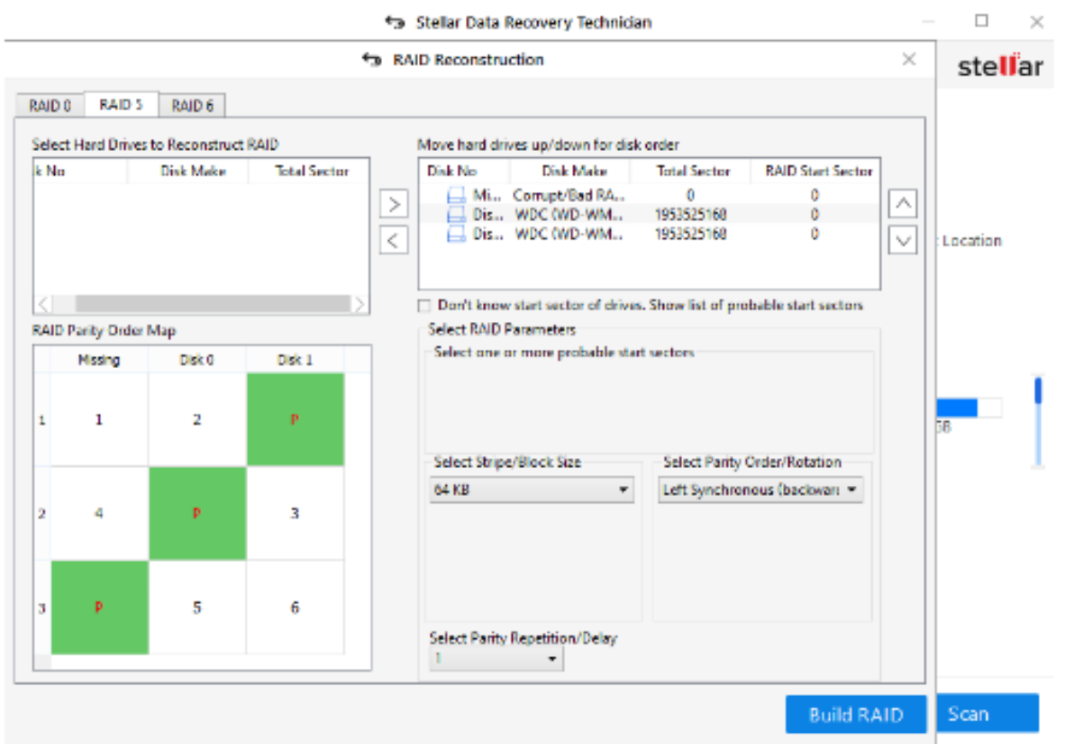
• It will open the Select Constructed RAID window. Click on the reconstructed RAID and click the Show Volume List button.

• This step will bring up a list of volumes. Select a volume from which you want to recover data and click on Scan. If you want to recover data from the whole disk, select the Physical Disk option and click Scan.
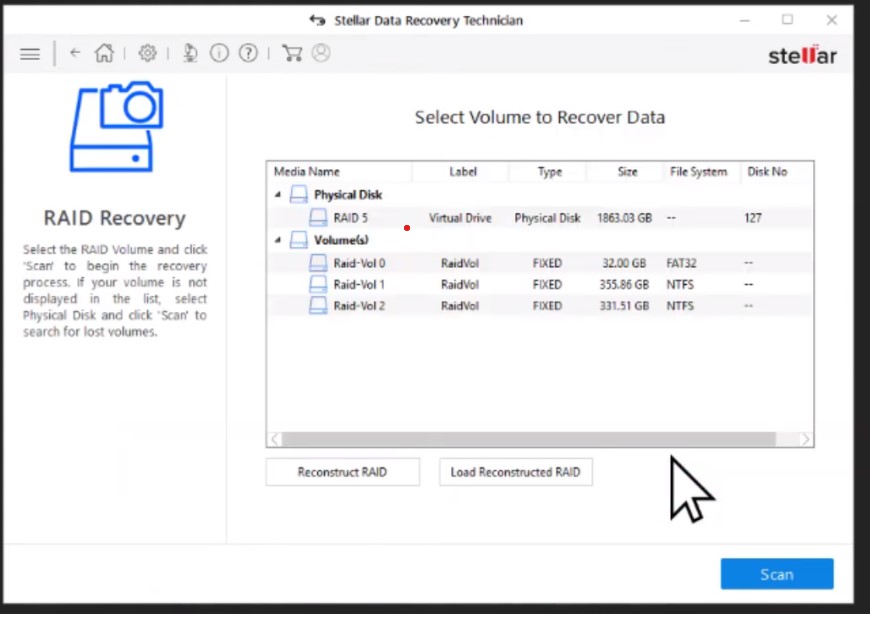
• The software will scan for the missing files. Wait for a few moments.
• Once the software displays all the recoverable files, preview them to check their integrity.
• If satisfied, click on Recover.
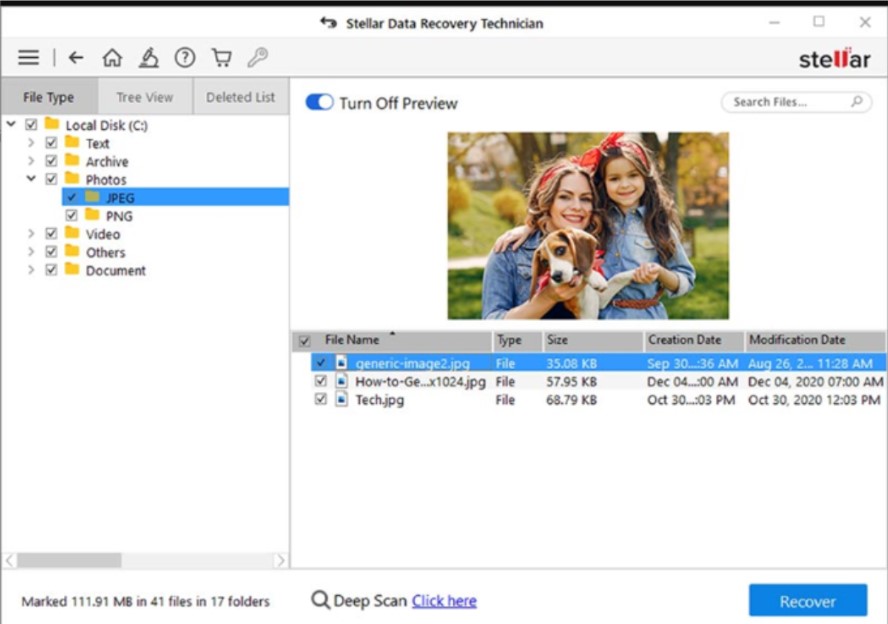
Conclusion
RAID 5 servers offer various storage benefits, including data security, higher read/write speeds, and more. But, like any other data storage device, they are also susceptible to data loss due todrive corruption, controller failure, malware attacks, etc. If you have a corrupt or failed RAID 5 server, use the above methods to recover data from RAID 5 array.

